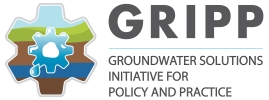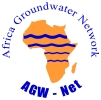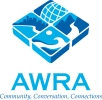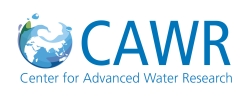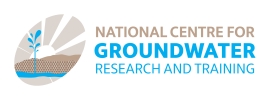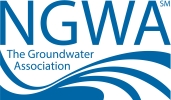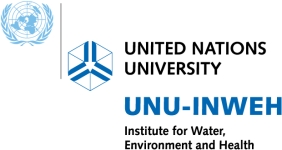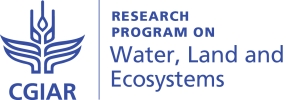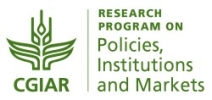Enhancing the ability of groundwater to recover from quality degradation
What is it about?
Near Berlin, contaminated groundwater was entering a borehole field in one of the city’s main water supply schemes, which provides about 30,000 m3 of water per day for about 300,000 people. The main contaminant was ammonium from a nearby old wastewater works, where sewage sludge had previously been deposited in large quantities. The contaminated sandy aquifer has a volume of about 200 million cubic meters (Mm3). Previously, the water was treated by conventional pump-and-treat methods before distribution to consumers. This, however, gave rise to high running costs for the water produced. Hence, to reduce costs and cut down on post-abstraction treatment, an innovative in-situ technology was devised in 2005, in which the polluted groundwater was treated by enhancing and speeding up already naturally occurring biochemical removal processes – so-called in-situ bioremediation.
How does in-situ bioremediation work?
An underground biotreatment zone, consisting of a large-scale “curtain” of 80 injection wells, was installed upstream and perpendicular to the groundwater flow direction in order to prevent contaminants from entering the drinking water extraction zone (Figure 1). The curtain is a roughly 1-km-long oxygen bubble wall providing effective aerobic biotransformation of ammonium to nitrate. A 12-month pilot test demonstrated the suitability of this approach. The ammonium is eliminated by microbial ammonium oxidation. In a second step further downstream, the nitrate formed in the process is eliminated chemolithotrophically, either by anaerobic ammonium oxidation or by oxidation of pyrite present in the aquifer matrix. These processes all work well on the basis of the natural presence of microflora and pyrite. There were no specific microbial cultures added to stimulate these processes. However, the amount of oxygen injected to stimulate the first aerobic processes should be strictly limited to the matrix oxygen demand, so the subsequent anaerobic processes are not disturbed by the presence of surplus oxygen transported downstream along with the groundwater flow.
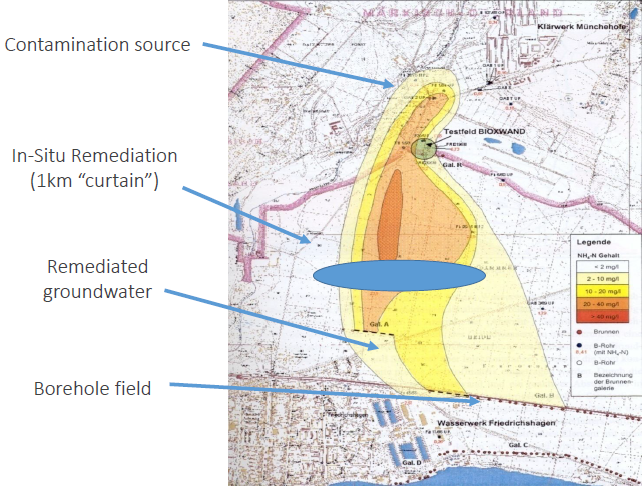
Figure 1. The pollution plume originating at the contamination source and layout of the bioremediation system, which consists mainly of a 1-km-long curtain of injection wells (source: Sensatec).
A critical aspect of the technology is the oxygen injection. Oxygen gas is pressure-pulsed into the aquifer to induce a finely dispersed, high-surface, residual trapped oxygen gas phase in the bubble wall zone, which supplies sufficient oxygen to the passing groundwater flow for stimulation and control of microbial oxidative degradation of ammonium [1] [2]. Groundwater modelling and pilot scale experimental work on the fundamentals of gas sparging were conducted to test and optimize the system [3] [4] [5]. Effective mixing of oxygenized water with anaerobic water was achieved using heterogeneous gas distribution in the wall and downstream without exceeding a critical dissolved oxygen concentration for nitrification in the bulk flow. The control site for monitoring the oxygen injection is shown in Figure 2.

Figure 2. Control site for monitoring the oxygen injection (photo: Sensatec).
By means of bioremediation, the ammonium concentration is reduced from 10-90 to about 1 mg/L NH4-N or less [6], matching the European drinking water quality standard of 1 mg/L NH4-N. Nitrate levels also remained well within the standards for abstracted water. Other water quality parameters, which could be influenced by the sewage treatment plant upstream, were also monitored and found to be within acceptable limits.
Lessons learned
The in-situ technology offers several advantages compared to alternatives: First, the natural subsurface bioreactor displays high performance stability, once the aeration phase has been established and stabilized in the aquifer. Second, the aquifer is very suitable as a reactor for nitrification processes due to constant temperature and sufficient pH-buffering mainly based on naturally present or artificially added carbonate compounds. Third, the reaction rates of nitrification for effective in-situ remediation were found to be adequate due to the slow flow velocity of the aquifer. Fourth, the infrastructure required to implement the in-situ treatment scheme was mostly limited to subsurface wells, so the land footprint of the solution was small (Figure 3). The method was also environmentally friendly, as injected chemicals did not adversely affect the aquifer and groundwater in or downstream of the site. Pre-feasibility assessment indicated that bioremediation was the only technical solution that could keep the final cost of water for consumers below EUR 0.05/m3.

Figure 3. Implementation of the oxygen curtain technology (photos: Sensatec).
Prospects for scaling up
In-situ bioremediation holds significant potential. As the approach is further tested and advanced, it can be applied as a conventional option for treating cases of critical groundwater contamination. It is a defensive method, meaning that it protects contaminated water from spreading and entering critical water abstraction zones. However, it does not tackle the original contamination source, so remediation will be required until the source is eliminated.
The principle of in-situ bioremediation can be applied and custom-designed for a wide range of contaminants, including heavy metals, and organic pollutants [7]. Ammonium and nitrate contamination is widespread around the world, often posing a threat to groundwater-based water supply systems. With well-tested cases in both rural [8] and urban areas, there is great scope for scaling out the technique, potentially also in urban and peri-urban areas of developing economies [9].
[1] Luckner, L. 2001. Effects of gases to reactive transport in the subsurface multiphase system. (in German: Wirkungen von Gasen auf den reaktiven Stofftransport im Mehrphasensystem Untergrund). Grundwasser 6(4): 155-162.
[2] Ehbrecht, H.; Luckner, L.; Engelmann, F. 2000. Entwicklung und Erprobung einer durchströmten Bio-Oxidations-Reinigungswand im Abstrom eines hoch mit Ammonium kontaminierten Grundwasserleiters.
BMBF-Projektantrag, FKZ 02WT0091.
[3] Geistlinger, H.; Lazik, D.; Beckman, A.; Krauss, G. 2002. Experimental and theoretical investigations of oxygen phase transfer. Groundwater Quality: Natural and Enhanced Restoration of Groundwater Pollution (Proceedings of the Groundwater Quality 2001 Conference, Sheffield. UK. June 2001). IAHS Publ. no. 275. Pp. 513-518.
[4] Lazik, D.; Geistlinger, H.; Krauss, G.; Beckmann, A.; Schirmer, M. 2002. Investigations on flow behaviour and dissolution kinetics of gases in an aquifer multiphase system. (in German: Untersuchungen zum Strömungsverhalten und zur Lösungskinetik von Gasen im Mehrphasensystem “Aquifer”). Grundwasser 7(3): 146-155.
[5] Weber, L.; Giese, R. 2001. Experimental investigations on hydraulic gas-water transport phenomena in porous media at pilot scale. (in German: Experimentelle Untersuchungen zum hydraulischen Gas-Wasser-Transport in porösen Medien im Pilotmaßstab) Proc. of the Dresden Groundwater Research Centre (DGFZ), 21. Pp. 109-126.
[6] Luckner, L.; Ehbrecht, E.; Roessner, U. 2001. In situ remediation of contaminated anoxic aquifers by highly oxygen saturated infiltration water. (in German: In-situ-Sanierung kontaminierter, anoxischer Aquifere durch hoch-sauerstoffangereicherte Wasserinfiltration). GWF/Wasser-Abfall, 142/11. Pp. 774-781.
[7] United States Environmental Protection Agency. 2013. Introduction to in situ bioremediation of groundwater. Office of Solid Waste and Emergency Response. EPA 542-R-13-018.
[8] Rudolf, D.L. 2015. Towards sustainable groundwater management in the agricultural landscape. University of Waterloo. http://www.cwn-rce.ca/assets/End-User-Reports/Agri-Food/Rudolph/CWN-EN-Rudolph-2015-5Pager-Web.pdf
[9] Ouedraogo, I.; Defourny, P.; Vanclooster, M. 2016. Mapping the groundwater vulnerability for pollution at the pan African scale. Science of the Total Environment 544: 939-953. http://dx.doi.org/10.1016/j.scitotenv.2015.11.135.
Stephan Huettmann1 and Frank Engelmann2
1 Sensatec GmbH, Germany; Email: s.huettmann@sensatec.de
2 Sensatec GmbH, Germany






